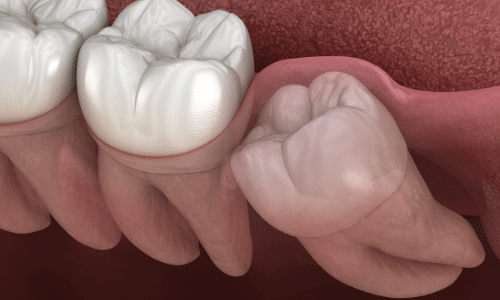
Wisdom Teeth Removal

The average mouth has enough space to accommodate 28 teeth. When wisdom teeth grow in (usually by the age of 18), the number of teeth increases to 32. Most mouths simply don’t have enough room to contain them properly. If the wisdom teeth grow in or erupt with proper alignment and the gum tissue remains healthy, extraction isn’t necessary. Unfortunately, this usually isn’t the case and most people will need a wisdom tooth extraction. Wisdom teeth, also known as “third molars” are often removed to prevent the pain and dental problems that arise from these teeth not erupting correctly. Early removal is recommended to avoid more invasive procedures later on.
Who should have a wisdom tooth removal?
Candidates for wisdom tooth extraction often have wisdom teeth that:
Are Impacted
Are erupting at the wrong angle
Don’t have enough room
Have gum disease or cavities
Even if you have yet to experience these symptoms, it is considered best practice to have an X-ray done to predict the location and angle of wisdom teeth that have not yet erupted.
The Extraction Procedure
With an oral examination and mouth x-ray, our doctors can evaluate the position of your wisdom teeth and predict if there will be any present or future problems.
The procedure will be performed under appropriate anesthesia to maximize patient comfort. Our doctors have the training, license, and experience to help you select the best anesthesia option:
- Local Anesthesia: The numbing of specific areas in your mouth through injection.
- IV Sedation: The administering of mild doses of sedatives through the vein to reduce anxiety, block pain, and put patients into a twilight state.
- General Anesthesia: Ensuring you will sleep soundly throughout the surgery by receiving drugs through a vein and breathing through a nasal tube.
These options, as well as the surgical risks, will be discussed with you before the procedure is performed.
Once sedated, the doctor may need to create an incision in your gums to access and remove the wisdom teeth. After removing, we suture the area for quick healing and use bite-down gauze to control bleeding. Your stitches will dissolve within a week or two.
You will rest under our supervision in the office until you are ready to be taken home.
You will leave our facility with a post-operative kit including home-care instructions, a prescription for pain medication, and antibiotics.
Contact Us
Comments are closed.
